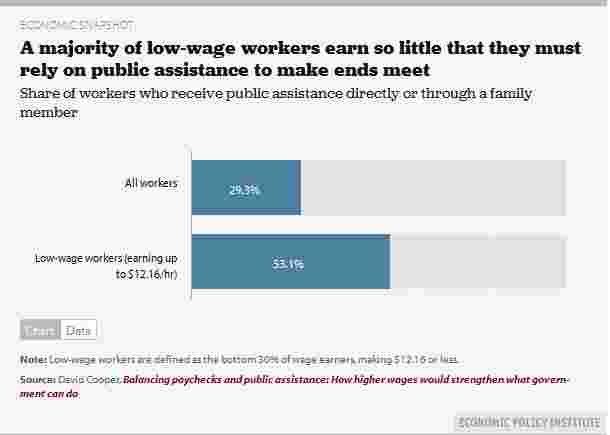A Majority Of Low-Wage Workers Earn So Little They Must Rely On Public Assistance To Make Ends Meet
There is an enduring myth that people who rely on public assistance are unwilling to work. However, there are 41.2 million working Americans (nearly 30 percent of the workforce) who receive public assistance—and nearly half of these workers (19.3 million) have full-time jobs. Not surprisingly, these workers are concentrated in jobs paying low hourly wages. A majority (53.1 percent) of workers earning less than $12.16 per hour—the bottom 30 percent of wage earners—earn so little on the job that they must rely on public assistance to make ends meet.

When corporations pay wages so low that working people must rely on public assistance, taxpayers are effectively subsidizing these companies to make up the difference between what workers make and what they need to support themselves and their families. Meanwhile, corporations continue to post extraordinarily high profits and CEOs’ salaries continue to climb. Of the many policies that would lift wages, raising the minimum wage is the simplest way to help millions of low-paid workers pay the bills and ensure that businesses are doing their fair share to provide working families with the means to a decent life. Higher wages would also free up billions of dollars that could be used to strengthen anti-poverty programs, fund new education initiatives, or make economy-boosting investments.
See related work on Wages, Incomes, and Wealth | Wages | Raising America's Pay


Spread the word